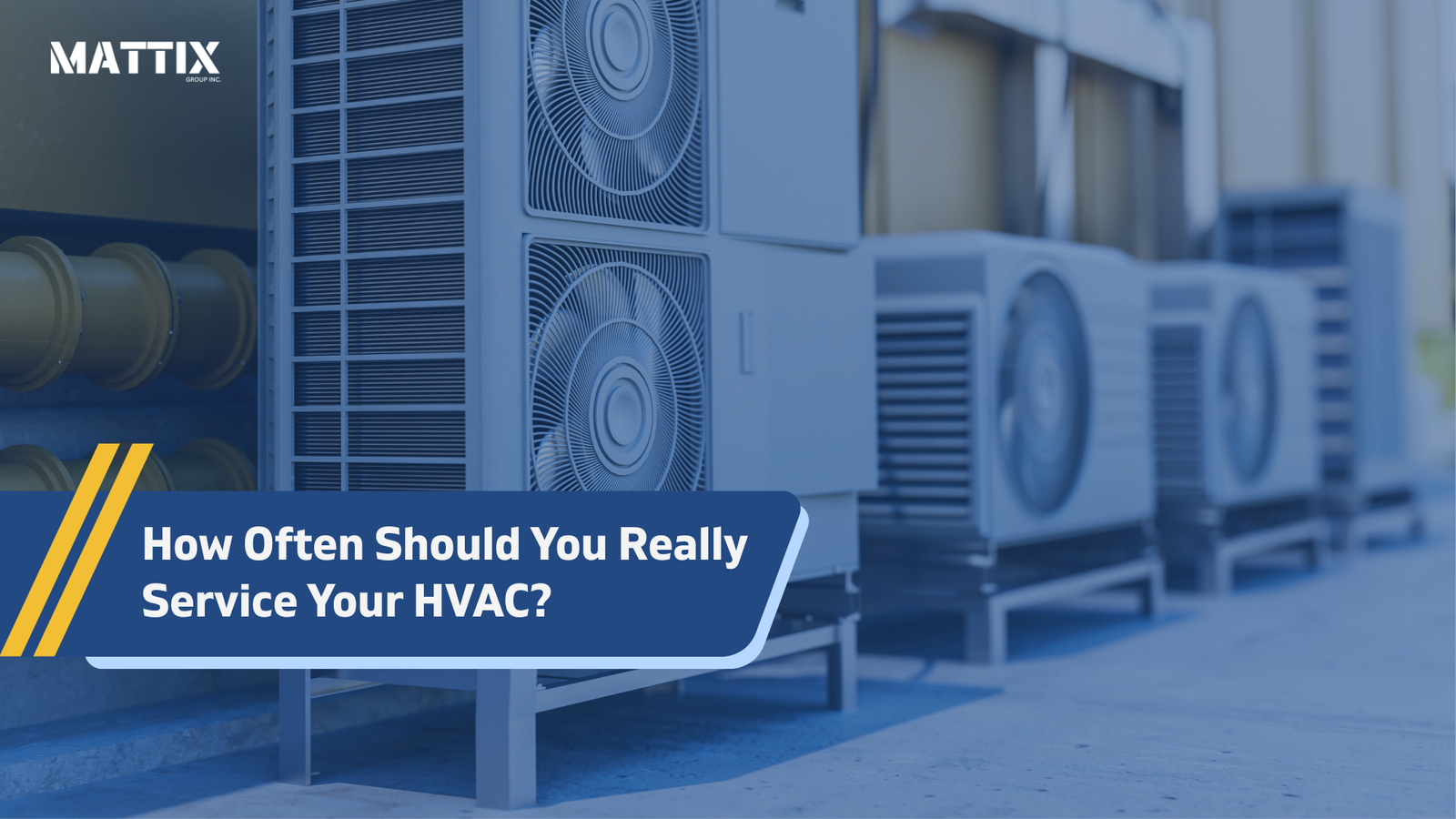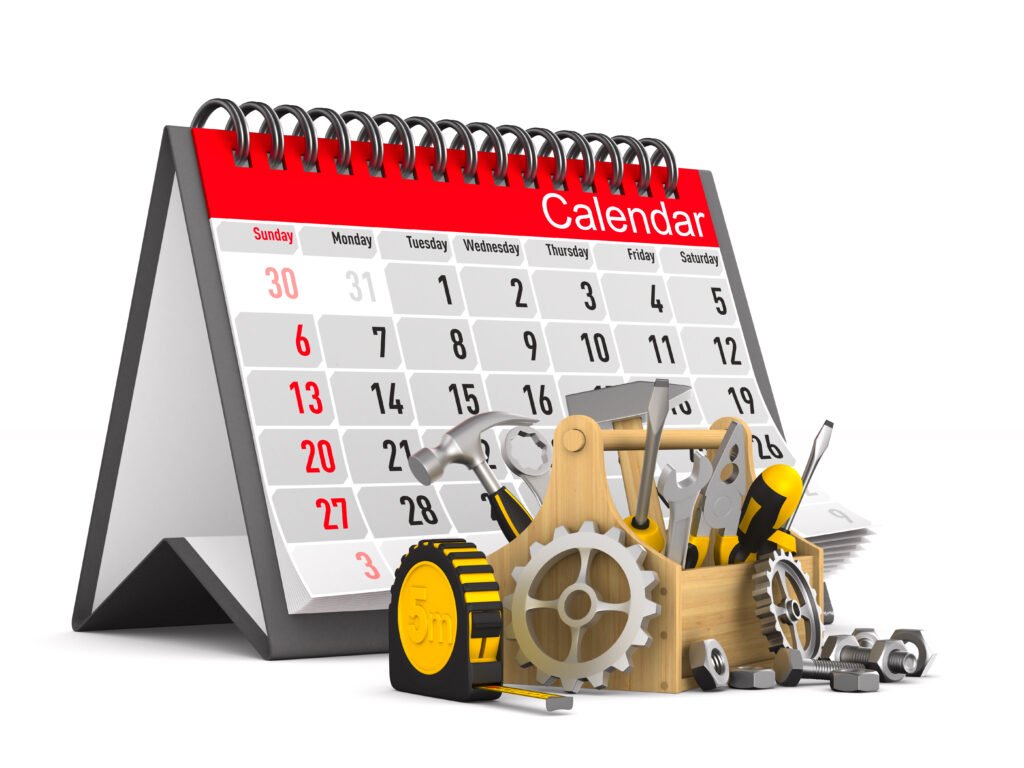
Your home is your sanctuary. It’s a refuge from sweltering heat and biting cold. But what happens when your HVAC system, the silent guardian of your comfort, starts to fail? The gentle hum turns into a concerning rattle. Your cool haven becomes a stuffy sauna. The cozy warmth you need is replaced by a bone-chilling draft. These are the moments we all dread. They force us to face the complex and often costly world of heating and air conditioning.
Most homeowners have an “out of sight, out of mind” view of their HVAC system. It’s tucked away in a closet, basement, or attic, so it’s easy to forget. That is, until it breaks down. But what if a little proactive care could prevent these surprise breakdowns? It could also save you money and improve your health. Plus, it can extend the life of a major home investment, which is vital in Canada’s climate.
This guide will cover the crucial topic of HVAC maintenance. We’ll answer the key question: How often should you service your home HVAC? You’ll learn the many benefits of regular tune-ups and the high costs of neglect. We will also cover what happens during a professional service and simple DIY tasks you can do to keep your system running smoothly.
The Great Debate: Annual vs. Biannual Servicing
To begin with, when it comes to the recommended frequency of HVAC maintenance. The general consensus among industry experts is to have your system professionally serviced at least once a year. However, for optimal performance and to prepare for the peak demands of a Canadian summer and winter, the gold standard is biannual servicing. In other words, this means having your air conditioning system checked in the spring and, subsequently, your heating system inspected in the fall.
For instance, think of it like this: you wouldn’t drive your car for years without an oil change and expect it to run efficiently. Similarly, your HVAC system, with its intricate network of moving parts, electrical components, and refrigerant lines, is no different. Ultimately, seasonal tune-ups ensure that both the heating and cooling functions of your system are in top condition before they are put to the test by extreme weather.

Several factors can influence the ideal servicing frequency for your specific situation:
- Age of Your System: Newer HVAC systems may function well with a single annual check-up. However, as systems age, they become more prone to wear and tear. For units older than 10 years, biannual maintenance is highly recommended to catch potential issues early and prevent costly breakdowns.
- Climate: In a country with such diverse and often extreme temperatures as Canada, your HVAC system works harder and for longer periods. From the humid summers of Southern Ontario to the frigid winters on the Prairies, your system is under constant strain. In such demanding environments, biannual servicing becomes even more critical.
- System Type: Heat pumps, which provide both heating and cooling, run year-round and therefore benefit from service every six months. According to Natural Resources Canada, oil-fired furnaces and boilers require annual cleaning and tuning, while natural gas and propane systems should be serviced at least every two years.
- Usage: The more you use your HVAC system, the more frequently it will need attention. Homes with occupants who are always present or those with specific temperature requirements will naturally put more stress on their systems.
The High Cost of Neglect: More Than Just a Repair Bill
Putting off HVAC maintenance might seem like a way to save a few dollars in the short term, but this seemingly harmless procrastination can lead to a cascade of expensive and inconvenient consequences. Neglecting your system is a gamble, and the odds are not in your favor.
Significant pain points you risk by skipping regular service:
- Skyrocketing Energy Bills: A dirty, unmaintained HVAC system has to work much harder to heat or cool your home, leading to a significant increase in your energy consumption. Heating and cooling can account for roughly two-thirds of an average home’s energy use, this inefficiency can cause your utility bills to skyrocket.
- Costly and Unexpected Breakdowns: Minor issues, when left unaddressed, can quickly escalate into major problems. A simple fix, like tightening a loose connection or cleaning a dirty coil, can prevent a complete system failure that often happens during the most extreme weather when you need your HVAC the most. Emergency repairs also come with premium price tags.
- Reduced System Lifespan: Your HVAC system is a major financial investment, and you want it to last as long as possible. Regular maintenance helps prevent the wear and tear that can prematurely shorten the life of your equipment. A well-maintained system can last 15 to 20 years, while a neglected one might fail much sooner.
- Inconsistent Comfort and Annoying Noises: Have you ever noticed that some rooms in your house are significantly warmer or cooler than others? This could be a sign of an inefficient HVAC system. Regular maintenance ensures consistent heating and cooling throughout your home. Strange noises like rattling, squealing, or banging are also common signs of a problem that a technician can address before it worsens.
- Voided Warranties: Many HVAC manufacturers require proof of regular maintenance to keep your warranty valid. Skipping service could leave you on the hook for expensive repairs that would have otherwise been covered.
What to Expect During a Professional HVAC Tune-Up
A professional HVAC service is much more than a quick glance at your unit. A qualified technician will perform a comprehensive inspection, cleaning, and tune-up to ensure your system is operating safely and efficiently. While the exact checklist may vary slightly between companies, a thorough service should include the following:
For Your Air Conditioning System (Spring/Summer Tune-Up):
- Inspect and clean condenser coils: Dirty coils hinder the system’s ability to release heat, reducing efficiency.
- Check refrigerant levels: Low refrigerant can indicate a leak and will prevent your system from cooling properly.
- Clean or replace air filters: Clogged filters restrict airflow and are a leading cause of HVAC problems.
- Inspect and clean the condensate drain line: A clogged drain line can lead to water damage and mold growth.
- Lubricate moving parts: Proper lubrication reduces friction and prevents premature wear on motors and fans.
- Test thermostat calibration: An inaccurate thermostat can lead to inefficient operation and discomfort.
- Inspect electrical connections: Loose or faulty wiring can be a safety hazard and cause system malfunctions.
- Check the blower motor and belt: The technician will ensure these components are in good working order.
For Your Heating System (Fall/Winter Tune-Up):
- Inspect the heat exchanger for cracks: A cracked heat exchanger can leak carbon monoxide into your home, a serious safety hazard.
- Clean and inspect the burners: Dirty burners can reduce efficiency and lead to ignition problems.
- Check for proper ignition and flame sensor operation: This ensures your furnace starts safely and reliably.
- Inspect the flue system for blockages: A clear flue is essential for proper and safe ventilation.
- Test safety controls and emergency shut-offs: This is crucial to ensure your system will shut down in an unsafe situation.
- Check gas pressure and connections: The technician will ensure there are no leaks and that the pressure is set correctly.
Empowering the Homeowner: Simple DIY HVAC Maintenance
While a professional tune-up is essential, there are several simple tasks you can perform yourself to help maintain your HVAC system’s efficiency between service appointments. These DIY tips can save you money and keep your system running smoothly:
- Change or Clean Your Air Filters Regularly: This is arguably the most important and easiest DIY task. Natural Resources Canada recommends inspecting, cleaning, or changing air filters regularly.[3] Depending on your filter type and household factors like pets and allergies, you should aim to change disposable filters every 1-3 months.
- Keep Outdoor Units Clear of Debris: Your outdoor condenser unit needs at least two feet of clearance around it to function properly. Regularly remove leaves, grass clippings, twigs, and any other debris that may have accumulated around the unit.
- Keep Indoor Vents and Registers Unobstructed: Make sure that furniture, rugs, or curtains are not blocking the airflow from your vents. Closing vents in unused rooms is not recommended as it can disrupt the system’s balance and cause pressure buildup.
- Clean Vents and Registers: Regularly vacuum and dust your vents and registers to prevent the buildup of dust and debris that can restrict airflow.
- Inspect and Clean the Condensate Drain Line: You can help prevent clogs by periodically pouring a mixture of water and vinegar down the condensate line to clear out any algae or sludge.
- Program Your Thermostat: Using a programmable or smart thermostat to set back the temperature when you’re away from home or asleep can significantly reduce your energy consumption.
The Financial Side of HVAC Servicing: An Investment in Your Home
It’s understandable to be concerned about the cost of HVAC maintenance. A typical service call for a tune-up can range from approximately $100 to $250. Some companies offer maintenance plans for an annual fee, which often include two service visits per year and may offer discounts on repairs and priority service.
While there is an upfront cost, it’s crucial to view regular HVAC maintenance as an investment rather than an expense. The money you spend on a tune-up can be easily offset by:
- Lower energy bills
- Avoiding expensive emergency repairs
- Extending the life of your system and delaying the need for a costly replacement
The cost of a new HVAC system can be a significant financial undertaking. When you consider the potential for catastrophic failure and the substantial expense of a full replacement, the cost of regular maintenance is a small price to pay for peace of mind and long-term savings. You may also be able to take advantage of government rebates and incentives for upgrading to more energy-efficient systems, which you can learn more about through resources like the Canada Greener Homes Initiative.
Finding the Right Professional: Choosing a Trusted HVAC Technician
Entrusting your home’s comfort system to a stranger can be daunting. It’s essential to find a qualified, reputable, and trustworthy HVAC contractor. Here are some key qualities to look for:
- Proper Licensing and Insurance: Always verify that the contractor is licensed and insured. In Canada, technician certification requirements vary by province. For example, in Ontario, technicians require a Certificate of Qualification. The interprovincial Red Seal Program endorsement also allows qualified mechanics to work across Canada.
- Experience and Expertise: Look for a company with a proven track record and technicians who are knowledgeable and up-to-date on the latest HVAC technology.
- Positive Reviews and References: Check online reviews and ask for references from past customers. A reputable company will have a history of satisfied clients. The Heating, Refrigeration and Air Conditioning Institute of Canada (HRAI) provides a contractor locator to help consumers find qualified professionals.
- Transparent and Detailed Estimates: A trustworthy contractor will provide a clear, written estimate that details the work to be performed and the associated costs. Be wary of a company that gives you a quote over the phone without a thorough inspection of your system.
- Comprehensive Home Evaluation: A good technician will perform a thorough evaluation of your home’s specific needs to recommend the right services or equipment.
For the best services Schedule Now with Mattix Group.
Your HVAC system is the heart of your home’s comfort.
A total system failure is a major risk. A full replacement is also very expensive. Regular maintenance is a small price to pay for peace of mind and long-term savings. You can also get government rebates for upgrading your system. Look into resources like the Canada Greener Homes Initiative, to learn more.

